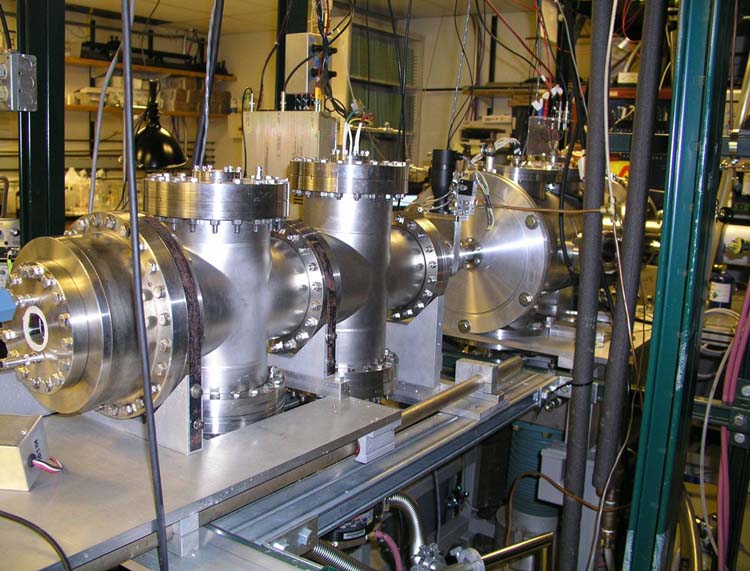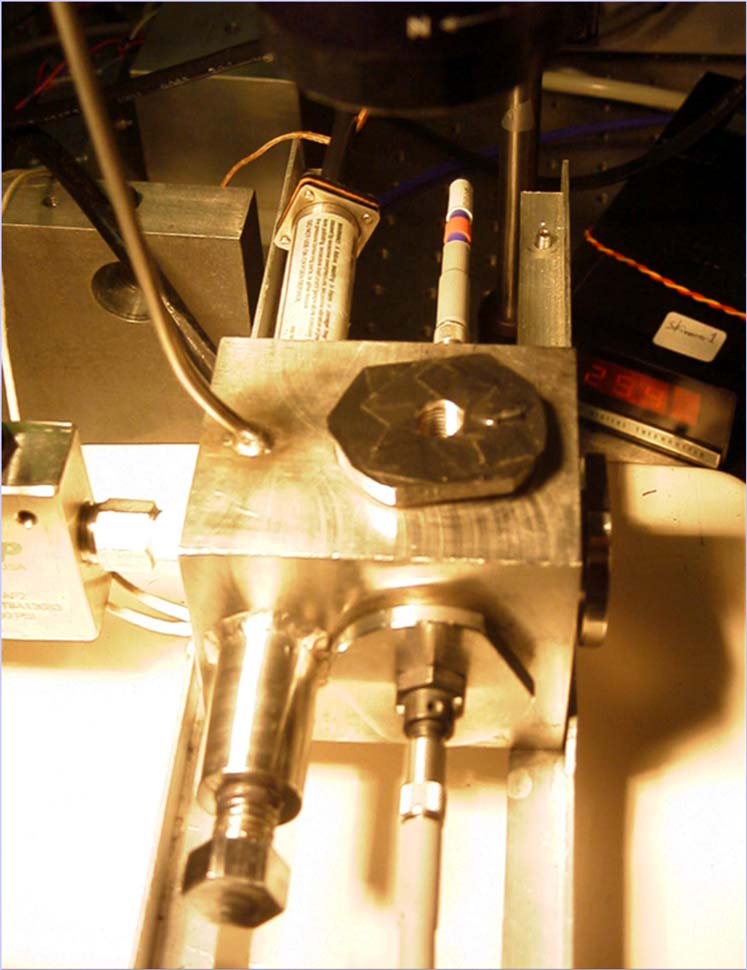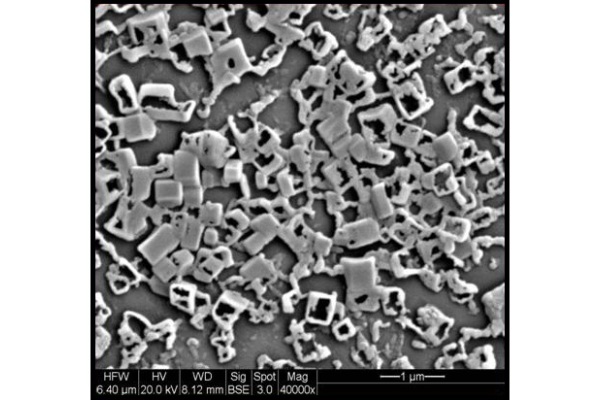Continetti Group
Rapid Expansion of Supercritical Solutions (RESS)
Supercritical fluids have received a lot of interest in chemistry and chemical engineering because they exhibit liquid-like solubilities and gas-like diffusivities and viscosity. Therefore supercritical fluids are able to dissolve compounds that would be relatively insoluble under sub-critical or ideal gas conditions, or to dissolve temperature sensitive materials at low temperatures.
The Rapid Expansion of Supercritical Solutions (RESS) is a versatile a powerful technique to obtain small particles of uniform size. In fact when a solution of a dissolved solute in a supercritical fluid is expanded across a micro-orifice, the density of the solution decreases dramatically and the solute precipitates uniformly due to high supersaturation ratios. We developed a continuous flow RESS apparatus for magnetic nanoparticle formation which is shown in the picture below. More information about the RESS process and magnetic nanoparticles formed can be found in this publication.
In the process design and utilization of RESS it is important to acquire accurate solubility data and for a continuous process to monitor on-line the composition of the expanding solution. For this purpose we designed and built a spectroscopic UV-Vis cell to be introduced in the RESS system, prior to the expansion. The UV-Vis cell is shown below.
We coupled the high pressure supersonic free-jet RESS expansion directly to a time-of-flight and quadrupole mass spectrometers to identify size, composition and velocity of the clusters and nanoparticles formed in the jet. More information can be found in the Machine B section.
Example of magnetic nanoparticles formed.
More photos of RESS can be found in the photo gallery.



